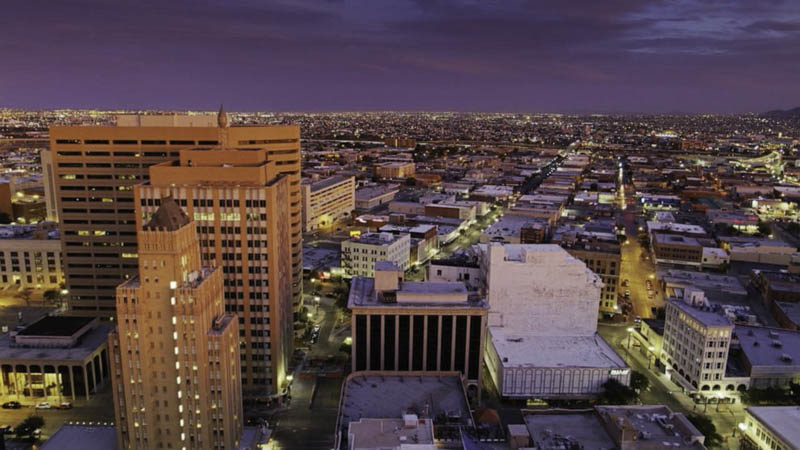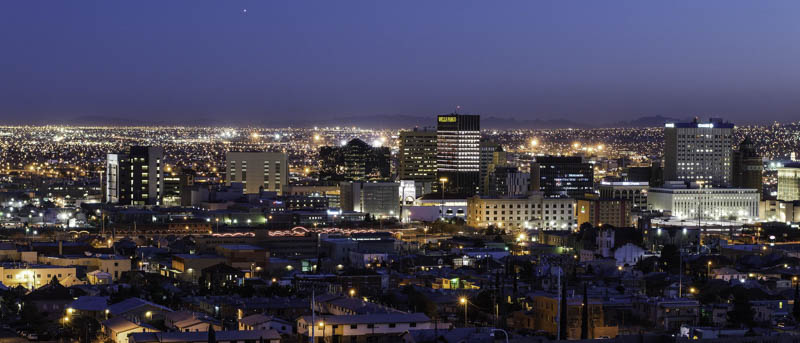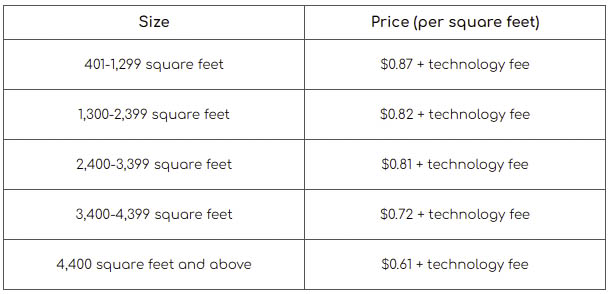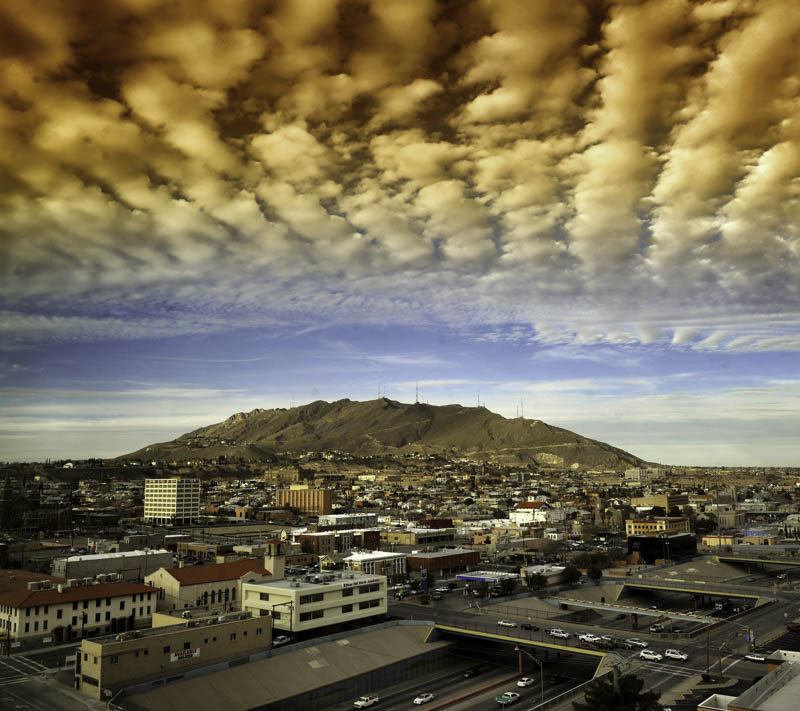El Paso is located in West Texas, close to the US-Mexico border. The area is a metroplex with cultures and traditions ranging from the Old West to Mexico to Native America. The county is currently undergoing its next phase of COVID-19 efforts, which coincides with the national housing boom. The year 2020 saw El Paso spend around $571.3 million on residential new construction projects. This comes from a high demand for housing but a lack of housing supply. The demand is expected to continue increasing due to the population growth in relation to a steadily growing military presence.
The Cost of Building a Custom Home in El Paso
Single-family homes in Texas underwent an increase in value, which rose by 18.1% during August 2020 to August 2021 period. Two factors affected the housing value: the law of supply and demand, and the amount residents are willing to pay. Real estate agents have noticed interested buyers are making offers above the listing price, mostly for bigger homes that cost more. This is causing the average housing prices in El Paso to increase.
Compared to the speed of selling a home, buying one can take several months. The El Paso Association of Builders is experiencing a boom for new home building as an effect of the low housing supply and high demand. Unfortunately, the materials used in home construction are still highly priced and come in varying supply levels. Most materials are either in short supply, no supply, uncertain supply, or too expensive.
The national cost for new home construction currently ranges between $100 to $155 per square foot. The cost of new home construction in El Paso is generally within this national range, depending on the location. According to El Paso-based firm Pointe Homes, home construction is set at the range of around $140 to $240 per square foot. Industry blog Estimation QS reports El Paso to be among the cheapest places to build in Texas, with the cost to build a residential property in the city estimated to be 7% below the national average, along with the cities of Lubbock and Tyler. Just ahead of these three cities are Brownwood and Texarkana, at 8% below the national average, and Wichita Falls at 9% below. The city of Childress is by far the cheapest place to build a home in the state, at a whopping 14% below the national average.

Figure 1. Typical cost breakdown of a single-family home constructed using the conventional method, according to Home Builder Digest.
Other than the location of the new home construction, there are also other factors to consider when budgeting for each project. These factors are divided into two categories: hard costs and soft costs. The hard costs are concerned with the aspects that are physically part of the house itself. This includes framing, foundation, plumbing, roofing, materials, and flooring. Meanwhile, soft costs are everything else needed to build the home. Soft costs include the cost of land, permits, and architecture and labor among other things. People considering new home construction are advised to understand these costs to know how the overall pricing of each project will fluctuate in order to plan for unforeseen changes.
Hard Costs
On average, homes can cost $146 per square foot while the average bid is at $156 per square foot. Homebuilder Pointe Homes provides more specific prices at a range of $140 to $240 per square foot, depending on the community. Areas like Jardin de Flores 2, Peyton Estates, and Tierra del Este 81 cost $140 to $160 per square foot. Higher prices are given for areas like Hillside Park, Tierra del Este 74, and Emerald Park; these are priced at around $190 to $240 per square foot. Pointe Homes’ works typically cost $130,000 to $1 million in total. Meanwhile, Palo Verde Homes prices the construction of 1,300 to 2,500 square foot homes at around $140,000 to $280,000. Home construction is more common in the eastern portion of El Paso. About 160 homes were constructed in El Paso in 2020 with a development range of $140,000 to $460,000. Part of the reason why the cost of home construction is this way is due to the increase in demand for housing, supply chain disruptions, and higher material costs. The delay in lumber delivery is one of the bigger obstacles the El Paso Association of Builders is facing today. Delivery time for liveable and lower pricing homes is typically at 90 to 120 days. When the sawmills shut down during spring 2020, market experts expected a housing slump. Because the expected housing slump did not arrive, there suddenly was not enough lumber to meet the demand in the real estate and construction sectors. This shortage has led to a recorded 500% increase in lumber prices. Another hard cost to consider is roofing, which costs an average range of $4,500 and $8,900 in El Paso. This is higher than the national average of $6,750.
Soft Costs
Cost of the Land
Coming out of the pandemic-stricken economic lockdown, land prices have gone up throughout Texas. In the West, sales of larger acres of properties went up by 50% in the first quarter of 2021, consequently pushing prices up by 2.9% to about $1,702 per acre. Listings on Redfin, Landwatch, and Zillow start at $2,000 for 0.28 acres to as high as $2,100,00 for 319 acres, with one 154.76-acre lot selling for $13,244,766. Land costs may continue to rise with the influx of business lots filling up throughout the city. Since July 2020, there has been a buzz about Amazon constructing a new 625,000-square-foot fulfillment center in the area that is expected to generate more jobs for El Pasoans, which could possibly attract more people to the area. Downtown is also experiencing a lot of development: the revival of Hotel Paso Del Norte, the transformation of El Paso Hilton into Plaza Hotel Pioneer Park, and the improvement grants given to seven other projects in the area. Higher density residential projects are also expected to take the place of the Blue Flame Building, and another low-income apartment complex is expected to be built in the Northeast. Some plots of land still remain property of city institutions, such as the El Paso Public Service Board, which governs El Paso Water and owns over 21,128 acres mostly in the Northeast and Northwest. The body sold 116 acres in 2019 for $6.9 million — the first sale since before 2007. The sales went to funding for water and sewage projects. The city also just sold 44 acres in West El Paso previously reserved for the now-defunct Great Wolf Lodge project.
Permits and Other Fees
The City of El Paso’s Planning and Inspection Fee Schedule reflects the following permit fees for residential buildings. These are specifically for additions or new single family residential construction residential permits based on size:
Note: these buildings are to include a single structure on one parcel that contains a single family dwelling duplex, triplex, or quadraplex. Total permit cost will include the following costs: The applicable technology fee, which covers software maintenance for the online government document processing systems such as permitting, is assessed per permit. The base fee for electrical permits is $76, with additional fees based on the number of outlets and fixtures (range, dryer, water heater, furnace, etc.). The same is true for plumbing fees, which also start at $76 and add on fees depending on the number of water closets and other fixtures. The base mechanical fee is one dollar higher at $77, adding on fees ranging from $3.18 to $47 for different systems. The base gas fee is also at $76, with additional fees of $10.59 for domestic cooking units and $13.76 for gas water heaters. Beyond permit fees, property taxes in the city have gone up in recent years. El Pasoans pay property taxes to five government entities: their school district, the city, the county, the hospital district, and the community college. All three school districts in the city have seen a sharp jump since 2012: 14% for El Paso and 20% for Ysleta, amounting to about $500 when adjusted for inflation; the jump was also 27% for Socorro, amounting to $900 by the same computation. The repercussions for homeowners have been substantial, given the 2.6% decline in the median household income between 2012 and 2019, according to El Paso Matters, causing them to have to cut back on other expenses.
Architecture and Design Fees
Dallas-based architect Bob Borson, FAIA, of “Life of an Architect” podcast lists four ways architects charge for their services. The first is the hourly fee, which will involve a chart of the rates of everyone working on a project, from administration, to drafting, to project architect, to partner, etc. charged based on the time spent. Although not a popular mode of charging due to the surprise costs clients can incur, this mode tends to be used when the scope of work is not too comprehensive. It can be moderated by setting a price cap or identifying milestones to track the progress as the work goes along.

Next would be per-square-foot fees — again, not the most reliable way to charge due to the difficulty of accounting for the many moving parts that go into the overall design process. The coordination an architect weaves through materials, systems, and structures cannot be proportionately narrowed down to a single value cost. For Western Texas, architectural firm Loveless Porter Architects estimates this cost to be at about $0.75 per square foot, varying considerably based on project type, size, and location.Some opt to charge via a combination of an hourly and fixed fee. Schematic and design development would be charged per hour, and the construction documentation would be charged on a fixed fee. Once construction administration commences, the fee reverts to an hourly rate as the client requests the architect’s oversight of project meetings, site visits, and other tasks. This structure hinges on the client’s close involvement at the start of planning to make the decisions that will help the design move along smoothly. The drawback is that if the architect is not as competent as the home owners wish, they could end up paying for more hours incurred due to poor work.
The most common — and perhaps the most ideal — method of charging is via a percentage of construction fees. This can vary from firm to firm, but generally falls between the 8-15% range, and should be based on any scope of work where architectural coordination is required. This means the cost of more expensive fixtures, such as chandeliers, does not factor into the architectural fee because it is irrelevant to the work the architect had to do in relation to the space’s design. However, fixtures such as kitchen appliances are a different story, as the architect would have to spend a considerable amount of time reviewing the cabinetry and trim that surround them.
On the construction side, El Paso is one of the cities that spent the most per worker in 2020 as it experienced a housing boom coming out of the COVID-19 lull, with housing supplies dropping to rates lower than they have since 1963 and lumber prices going up by more than 500%. The city spent about $571.3 million on new residential construction or about $48,006 per construction worker. El Paso’s construction industry also increased by 19.8%, adding 1,970 jobs as it continues to work to meet the demand for new homes.
How do custom home building trends in El Paso compare to nearby cities?
Based on permits from the last five years found on online contractor marketplace BuildZoom (BZ), homes in nearby cities fall within the mid- to high-end range costs for building in El Paso. For Horizon City, the average cost to build a new home is $254,316, with a low of $204,061 and going as high as $295,915. In Canutillo, it starts at $271,301 and goes as high as $299,777. Meanwhile, in neighboring Las Cruces, New Mexico, with which the city forms an international metropolitan area along with Ciudad Juarez in the state of Chihuahua in Mexico, the average cost per square foot is $81.03, going as low as $36.07 per square foot for a 2,218-square-foot home and as high as $126.47 per square foot for a 2,722-square-foot home. This puts the average total cost to build a one to two-story home at a lower $180,058, starting as low as $80,000 and going as high as $344,250. In comparison to the cost to build in other major Texas cities, San Antonio averages between the value-conscious and mid-range estimated total construction costs of El Paso. Thus, it averages at $172,509, going as low as $69,925 and as high as $373,800. Single-family homes with attached garages in the area average at 2,438 square feet. Meanwhile, in Dallas, the cost to build leans more towards the high-end range estimated total construction cost for El Paso, averaging at $374,461, starting at $92,880 and going as high as $1,750,000. Single-family homes in the area average at 3,717 square feet, with one to two floors.
Major Custom Home Building Cost Trends Across the Web for El Paso
Industry blog Estimation QS reports El Paso to be among the cheapest places to build in Texas, with the cost to build a residential property in the city estimated to be 7% below the national average, along with the cities of Lubbock and Tyler. Just ahead of these three cities are Brownwood and Texarkana, at 8% below the national average, and Wichita Falls at 9% below. The city of Childress is by far the cheapest place to build a home in the state, at a whopping 14% below the national average.
The Future of El Paso Construction Industry
El Paso has reported experiencing a high demand for housing in the area. The county is listed as the ninth most popular destination for Californians relocating from San Diego to find cheaper homes and more space. It has been noted, however, that the housing supply cannot keep up with the current demand. Buying a home can take several months. This is causing the El Paso Association of Builders to expect a boom for new home construction. Builders in El Paso will also have to face increased costs and limited supply of materials that seem to be spanning across the nation.
Prices are also expected to rise, even with cost reductions for certain factors. This comes as a result of a lack of supply in the face of rising demand, inflation, and labor shortage. The labor shortage, in particular, has two ways of affecting the construction industry. With the veteran workforce aging out and the younger generations lacking either experience or expertise, the pool of skilled workers will continue to diminish. This means that prices will continue to rise, at least for the foreseeable future.
Master-Planned Community
Perhaps the most highly anticipated development in the area is the Campo Del Sol master-planned community slated to launch near Painted Dunes Golf Course in 2022. Its first phase will include about 2,500 single-family homes, a ten-acre park, walking trails, and resort-style amenities across four acres. The land will also include a lazy river, splash pad, activity pool, and food truck space. Once completed, it will have a total of 9,500 residential units, including multifamily and age-restricted homes, and 135 acres of park land.
Historic Districts
El Segundo Barrio was officially declared a historic district on November 5, 2021. This means properties in the area will be eligible for restoration incentives. The neighborhood has long been hailed as the “Ellis Island of the Southwest” as it has welcomed immigrants not just from Mexico but all over the world. El Paso County Commissioner David Stout, in an interview with KTSM, said he hopes seeing the development with Segundo Barrio will change Downtown property owners’ minds about the neighborhood’s own application for historic district status, which was earlier denied and subjected to further review in June.
Considering building a home in El Paso?
Contact us for a free consultation



